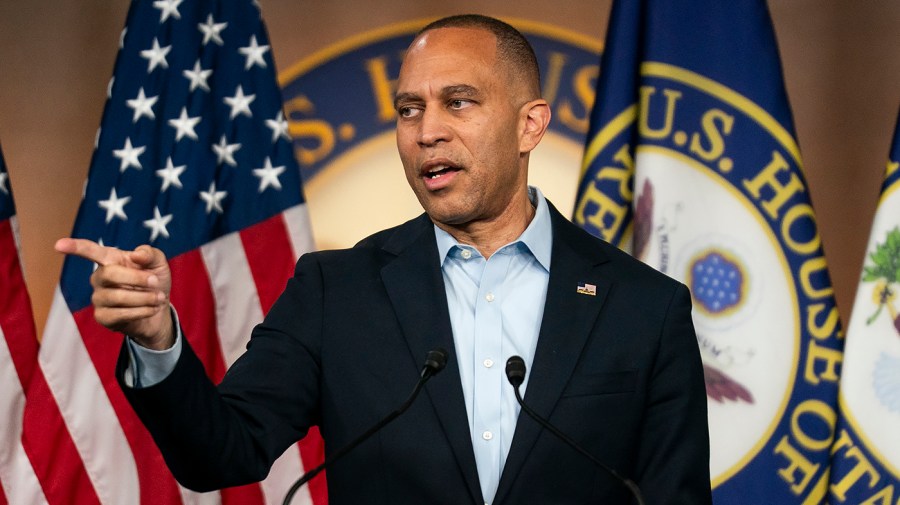
A quick google (or generative AI) search will pour hundreds of statistics about the dire state of healthcare costs plaguing our nation. Whether it’s the fact that we spend almost 5x as much as neighboring Canada per capita on healthcare administrative costs or that it means every 4th dollar spent is wasted, there are numerous scary statistics we have grown used to reading.
It certainly wasn’t meant to be.
How did a system designed to heal become so broken and smeared in complexity that it is haunting us financially and clinically?
The untamed beast that is ever growing
Two centuries ago, Thomas Jefferson famously said that “a country’s strength lies in the health of its people.” He could not have imagined a world where seeking care requires deciphering 800‑page insurance rulings before you see your provider. Even a few decades back, a physician using pen and paper could treat patients, without requiring logging into (or filling out) multiple payer portals (or prior auth forms) or justifying every procedure in triplicate. That simplicity now feels shockingly antiquated. The biggest question undoubtedly is, are we unable to keep “care” at the center of “care continuum?”
Today, doctors spend 17% of their work week (could be up to 10 hours depending on their care setting) just on administrative tasks. Prior authorization, billing, charting, coding, data entry into EHRs, RCM audits, quality reporting, and what not have metastasized. HITECH’s electronic record push, though well meaning, translated into siloed systems and mandatory documentation that demand more time at home, eroding both clinical presence and work‑life balance.
But is technology the real issue? Or processes?
Maybe, none of it. Each part of this system works perfectly independently, it’s when they come true the real catastrophe happens.
From hospital leaders to front‑line providers, policymakers to payers, everyone wants to fix this. No one set out to build a monster. Each new rule, digital upgrade, coding standard, or quality metric was created with the best intentions. Yet over decades, we unwittingly assembled a bureaucracy too complex to reform. Providers entered medicine to heal, not to navigate labyrinths. We’re all stuck not because of malice, but because the system grew in pieces no one knew how to stitch back together.
The new entrant: AI
A lot has been said about AI in healthcare, like any other industry. The hype is bigger than anything seen since the dot com boom. And it’s very much real. The vast $353B US administrative bill is already being chipped away by it, with experts predicting a reduction of $168 billion in annual administrative costs by adoption of AI tools in near future. Another analysis by CAQH found roughly $20 billion of near-term savings by moving from manual to electronic workflows across eligibility, prior authorization, and payment reconciliation, among others. The rulebook was expanded from about 14,000 ICD-9 codes to nearly 70,000 in ICD-10, so a surge in edge cases has been created and denials along with re-work have been multiplied. Out of more than 1000 healthcare finance, technology, and RCM leaders surveyed by Black Book Market Research, 83% reported that AI-driven automation reduced claim denials by at least 10% within the first 6 months of implementation.
Real world excellence and anticipated possibilities
With open-weight LLMs running on modern GPU stacks, we’re now able to reason over complex claims in real time. By bootstrapping high-quality few-shot examples and using reinforcement learning to tune these models with optimal reward strategies and subsequently wiring them into pipelines that surface payer policy shifts as they happen, we’re finally seeing real adaptability emerge. These developments set this wave apart from the big-data frenzy of the 2010s. Although fragmented data, stringent privacy regulations, and ageing hosts continue to complicate the landscape, I can feel the momentum growing every day. RCM is genuinely the first administrative area where AI is really reducing workload rather than adding more clicks. This will keep on growing if incentives are maintained in line and algorithms are paired with human auditors.
Denial prevention is now proactive; according to a study of 102 million hospital remits, 86% of denials might have been avoided, a use case now being solved at scale by healthcare technology evangelists. Many of these are being flagged by contemporary classifiers at the time of claim creation, allowing staff to correct eligibility or modifiers before money is at risk. Regarding documentation, AHIMA has made real-time question answer and agreement rates a key CDI KPI, highlighting the ways in which point-of-care nudges reduce DNFB delays and improve safety-indicator accuracy.
I see AI as the fulcrum for innovation; we are already testing CDI engines that map V28 risk in real time, eligibility checks that conclude while the patient is still present, and LLM agents that compose appeal packets. A zero-touch RCM technology is the logical conclusion; it reconciles charge capture, documentation, and payment integrity before a claim ever leaves the EHR, giving doctors their time back and providing executives with a revenue stream that at last functions as the spreadsheets dictate.
Disclaimer and the way forward
The only way forward for our healthcare system to come out of the administrative mess it finds itself in right now is grassroots, a coalition at every level. That’s why people like myself are bullish on AI. Redesigning workflows, simplifying RCM processes, trimming codes, realigning incentives: all of it can be aided through purposeful AI.
Seeing good, hardworking healthcare people in a helpless situation is always upsetting, but I have faith that newer technologies and a more sophisticated push will enable us to slowly return to a system that is patient-centered and physician-caring. My only warning is that point solutions are ineffective. An all-encompassing, platform strategy is the best course of action if AI wants to make a dent. Otherwise, each touchpoint will continue to be disconnected, just as it has been.
I am sure that dent is round the corner.
About Dushyant Mishra
Dushyant Mishra is the Co-founder and Chief Executive Officer of RapidClaims, where he pairs deep healthcare-technology expertise with a pragmatic approach to AI through his decade-long experience in fixing the financial fault lines in US healthcare. RapidClaims partners with health systems, hospitals, IDNs, and physician groups to shift revenue-cycle work from reactive correction to proactive prevention. Through transparent, human-centred automation, the New York-based firm eliminates denials, secure rightful payment and give care teams back their time and peace of mind. As a CEO, his leadership blends product rigour with an operator’s eye for margin, earning the trust of healthcare providers that now rely on RapidClaims to recover millions in lost revenue each year.














